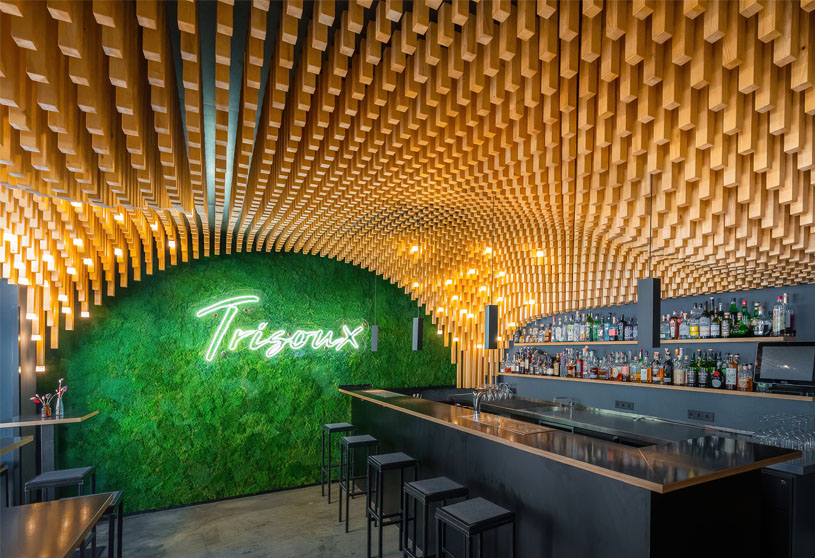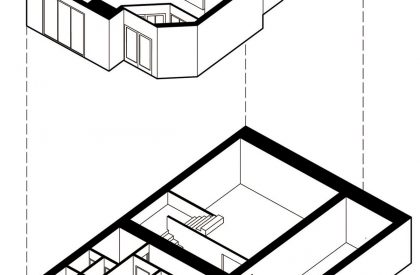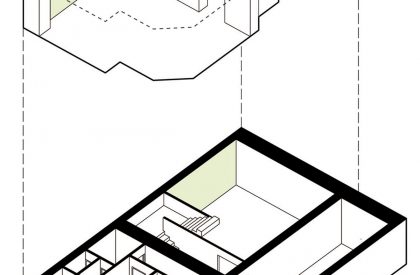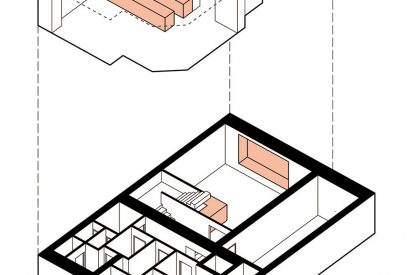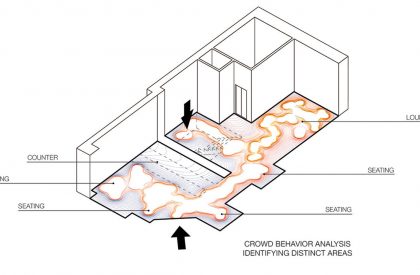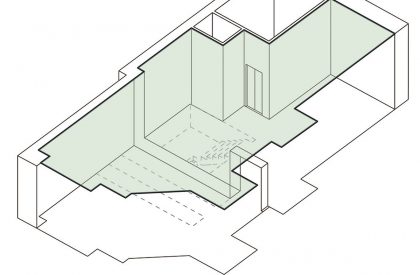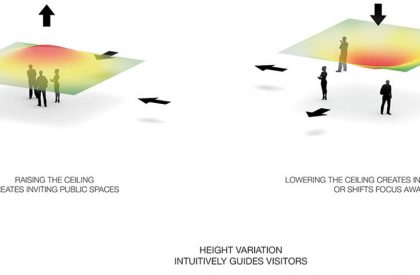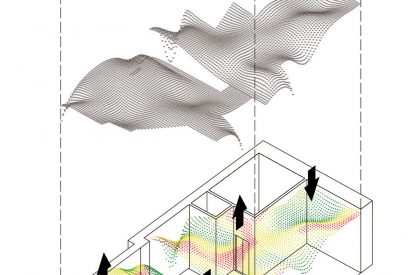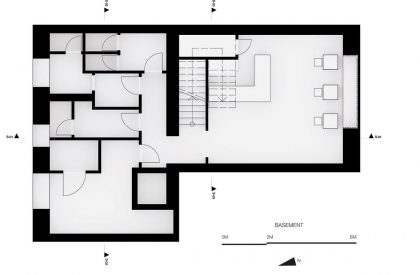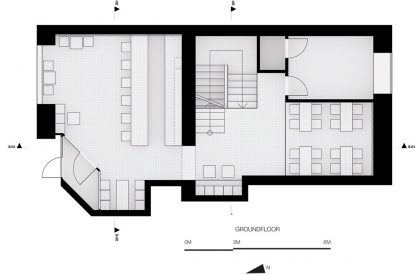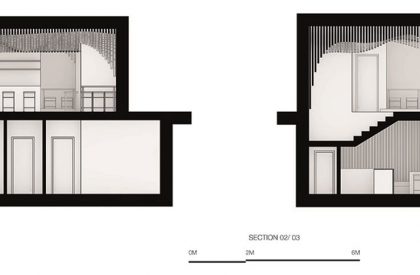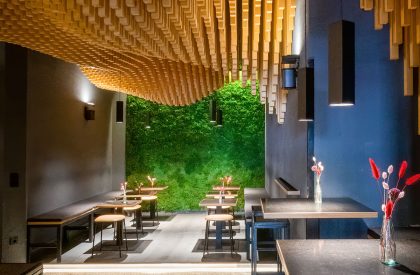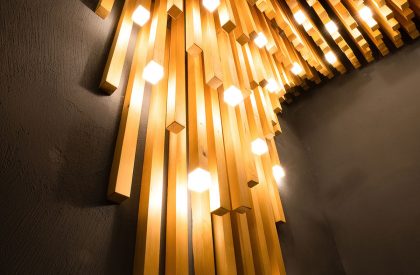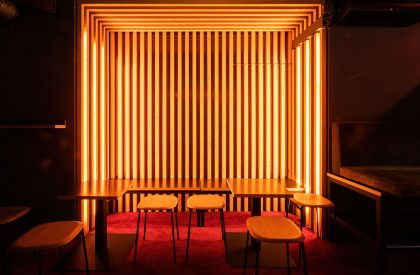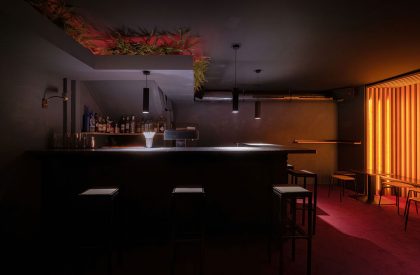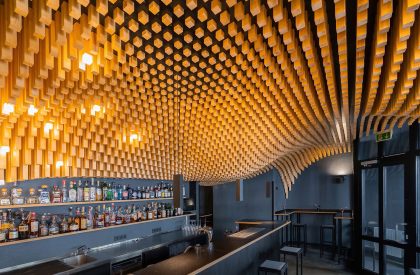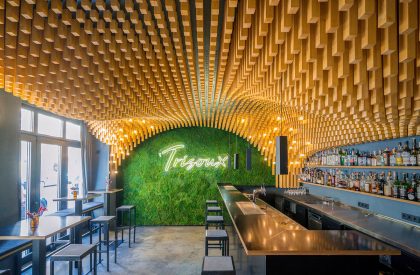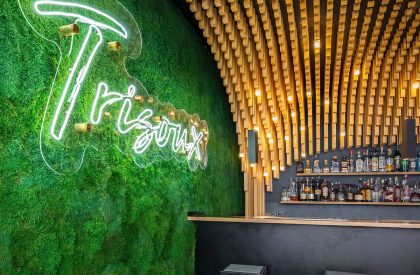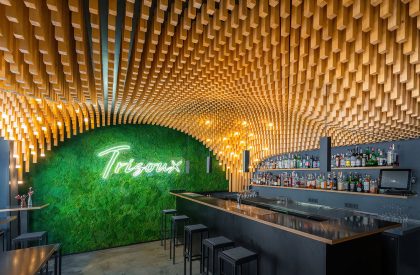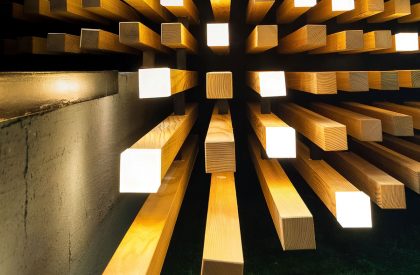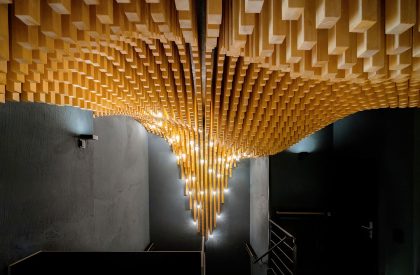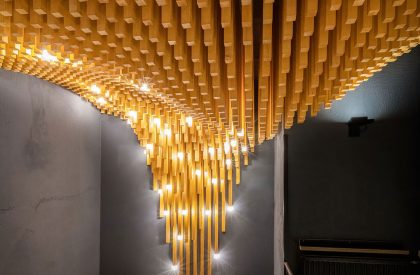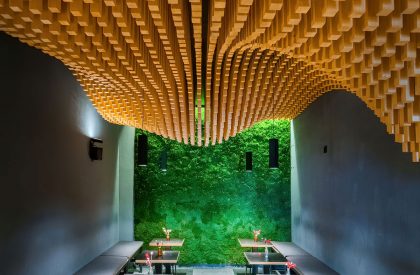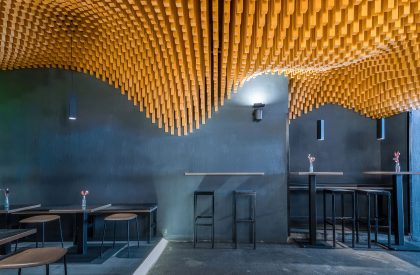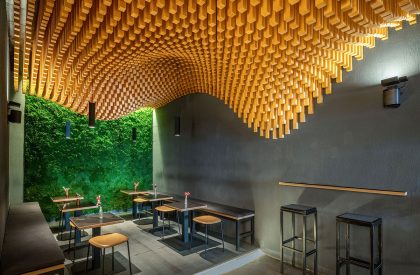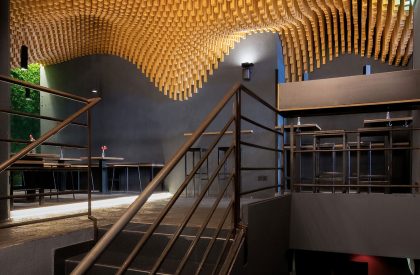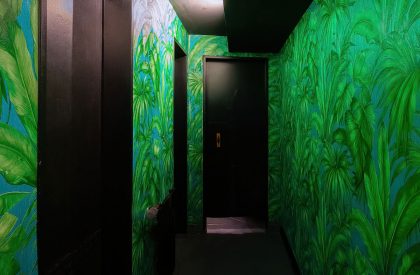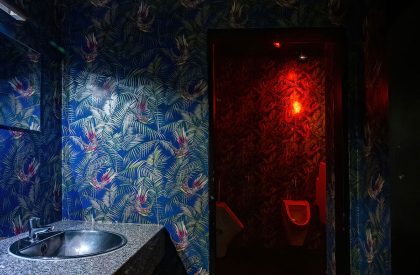Excerpt: Trisoux Bar, designed by the architectural firm Martino Hutz Architecture, occupies two levels of a residential building from 1890. Crowd simulation was used to analyze optimal floor area usage and generate varied atmospheres within the space. A parametrically derived double curved surface is generated from this data that defines the character of each space and intuitively guides the visitor towards particular experiences.
Project Description
[Text as submitted by Architect] The craft-drinking bar Trisoux is located in the center of Glockenbach, a young, vibrant neighborhood in the heart of Munich. The 160m² bar occupies two levels of a residential building from 1890. On the ground floor is the central bar counter and lounge; additional space to extend the bar and host small events is included in the basement. However, the space contains disjointed rooms and obstructed spaces. Therefore, the ceiling was chosen as the main design area to create an exceptional bar-going experience. Thus, the builders’ quartet Ben Bauer, Max Braunmiller, Philipp Fröhlich, and Gustav Grossmann’s wishes could be fulfilled.
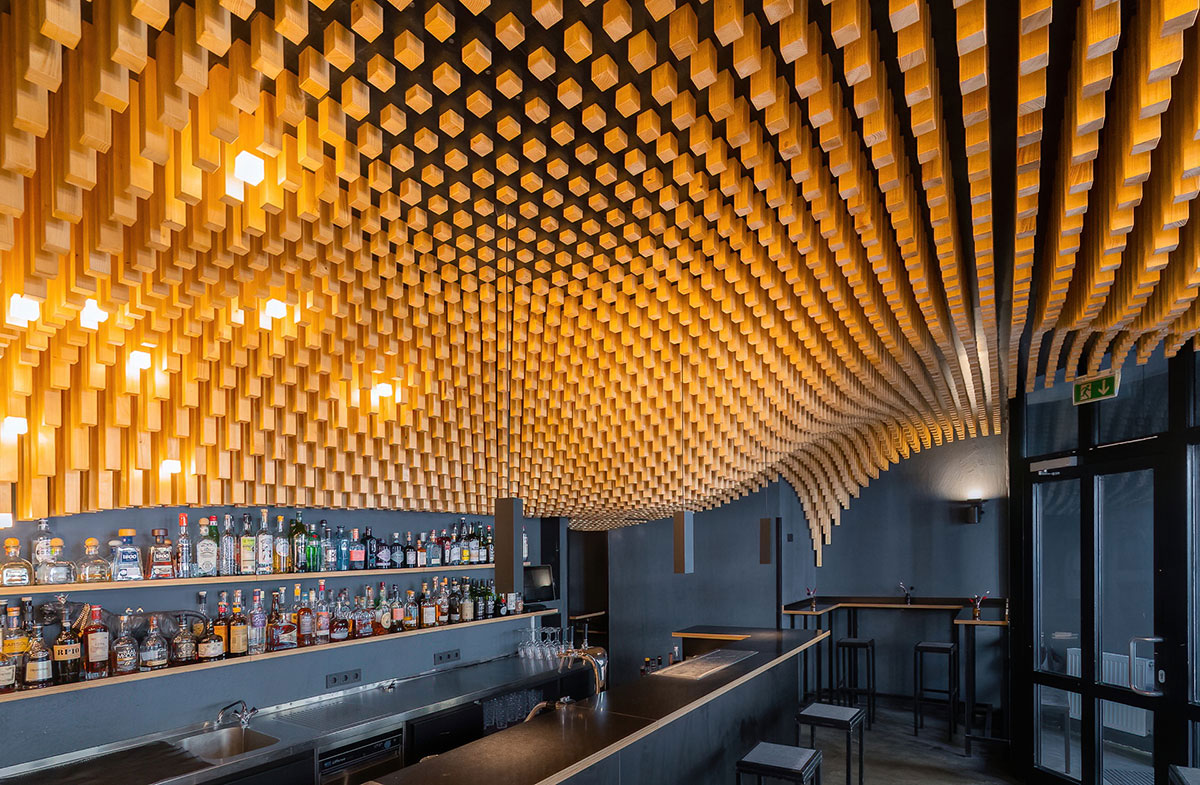
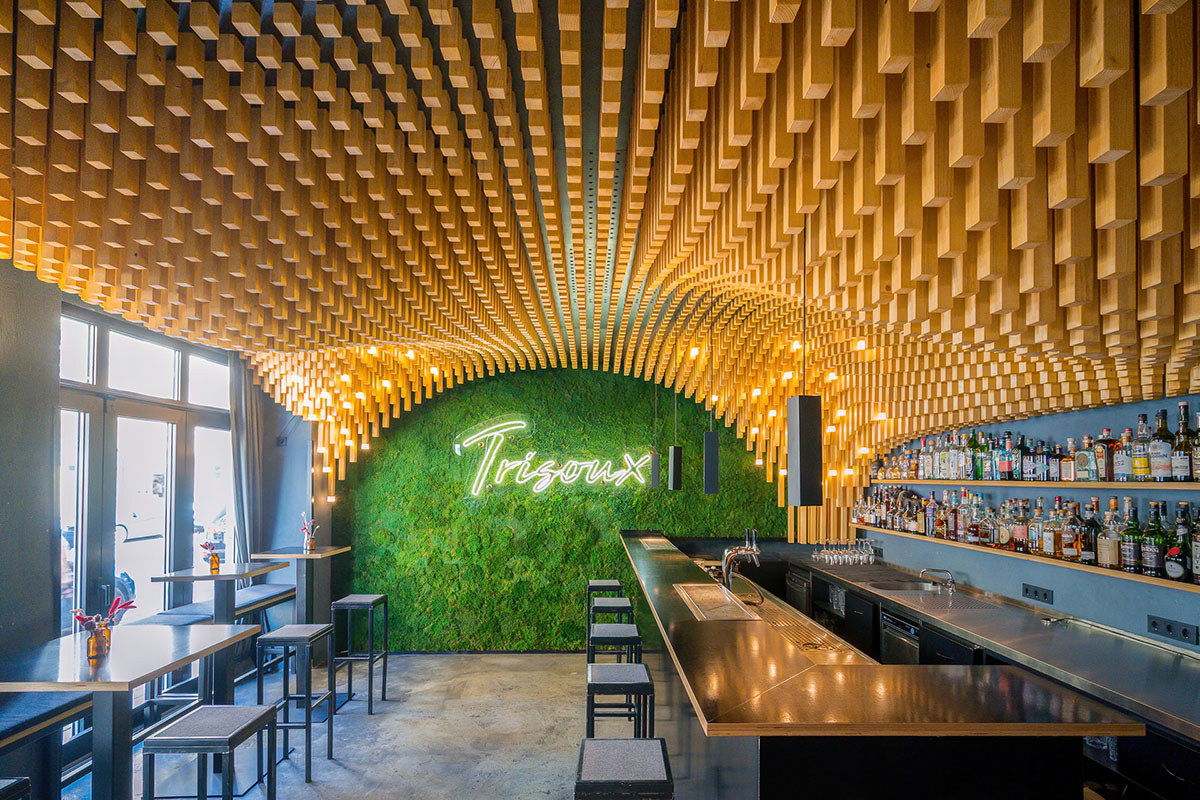
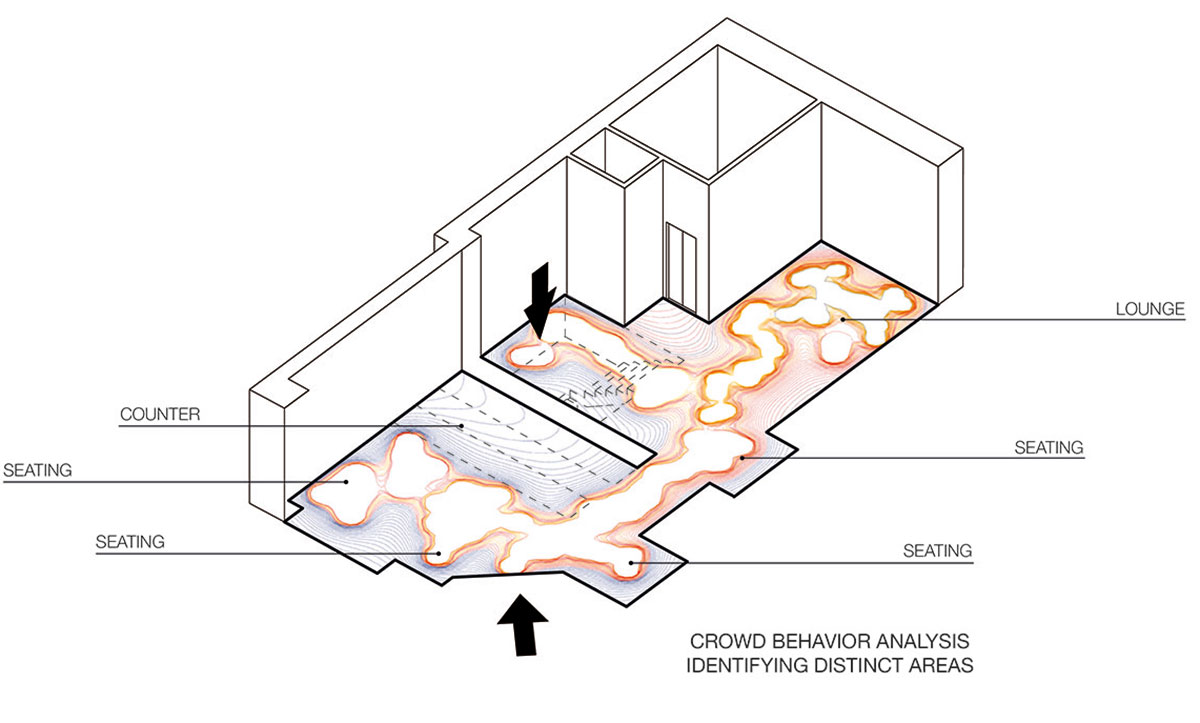
Crowd simulation was used to analyze optimal floor area usage and generate varied atmospheres within the space. A parametrically derived double curved surface is generated from this data that defines the character of each space and intuitively guides the visitor towards particular experiences. This resultant surface is subdivided into 6400 individual standard spruce wood rods (4,5×4,5 cm) that hang independently from the ceiling. In total, the wooden rods measure 3km and 7.4m³.
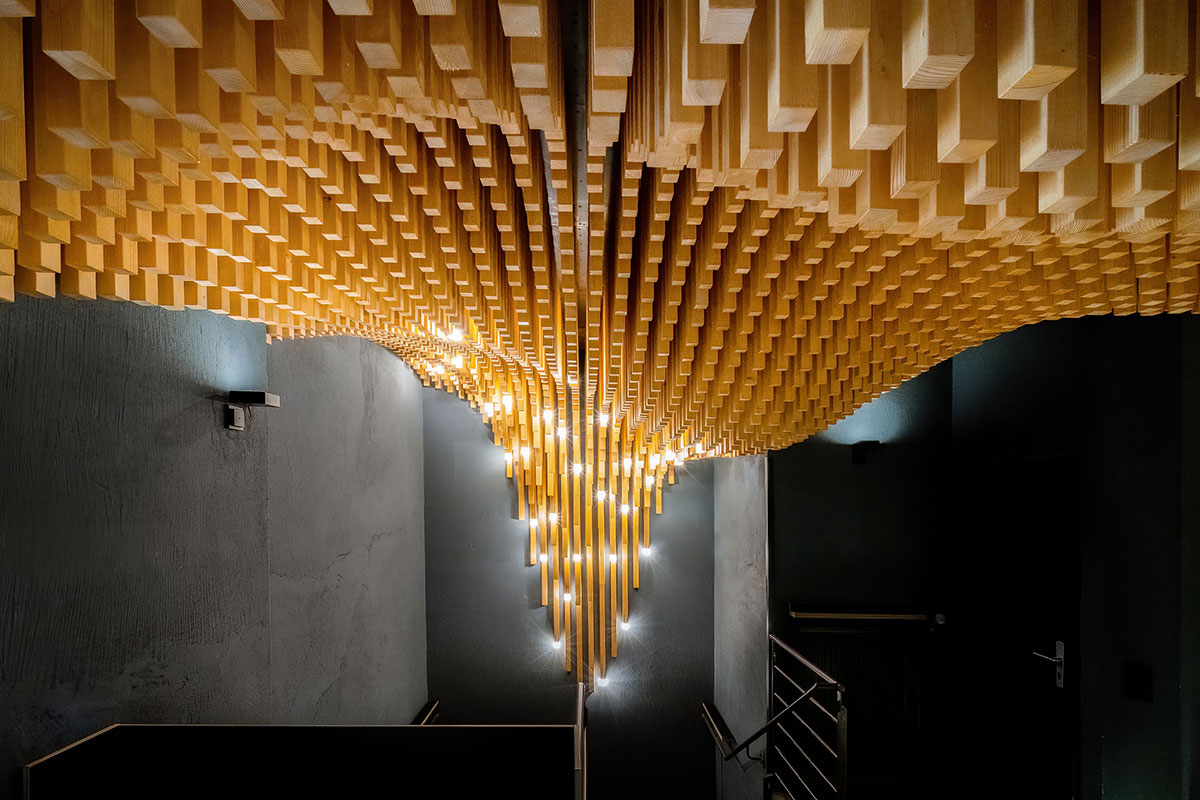
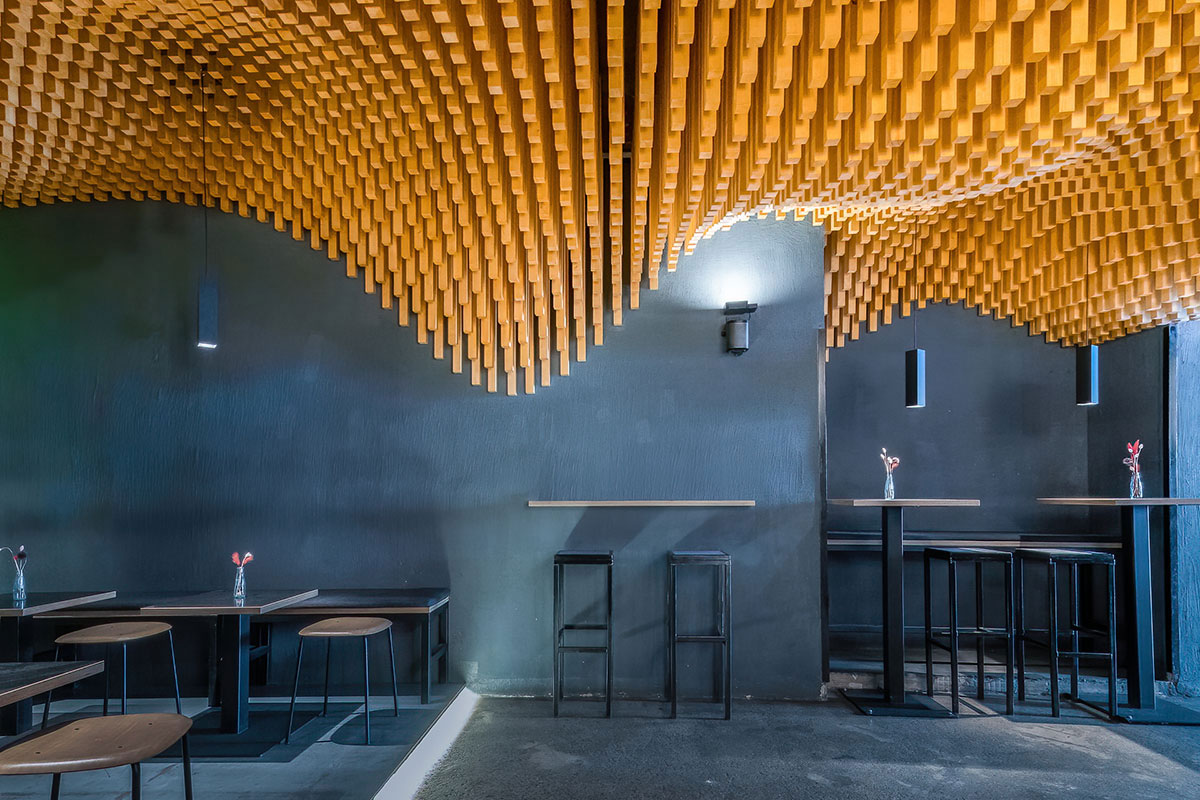

Variation in height defines the use and character of each space. High points create public areas for groups to gather, while low points invite intimate experiences. Select moments in the form reach down to interact with elements and guests in the space; grabbing a shelf or reaching for a corner fully envelops the visitor within the form. This variation of space drives distinction in experience from one individual to another.
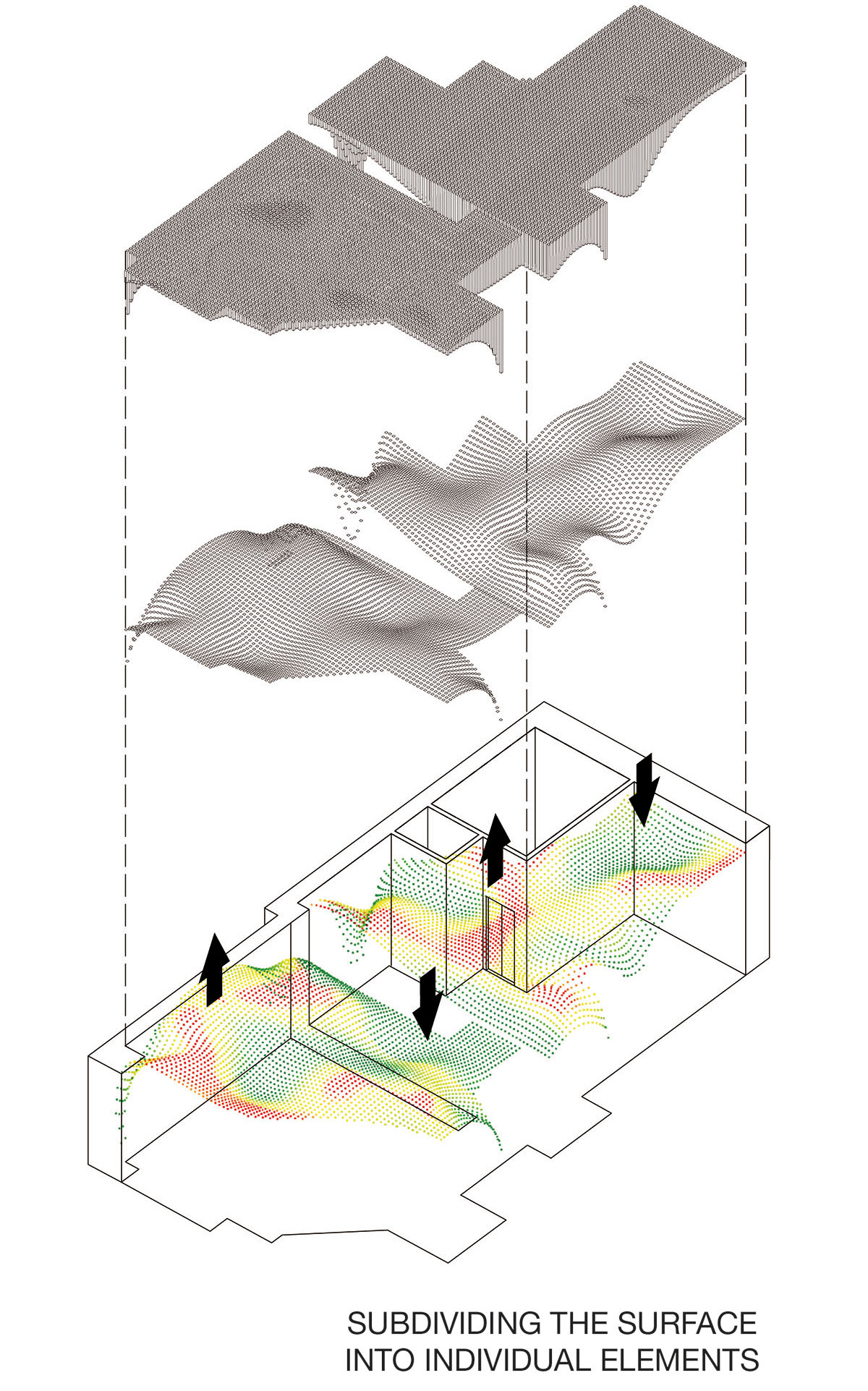
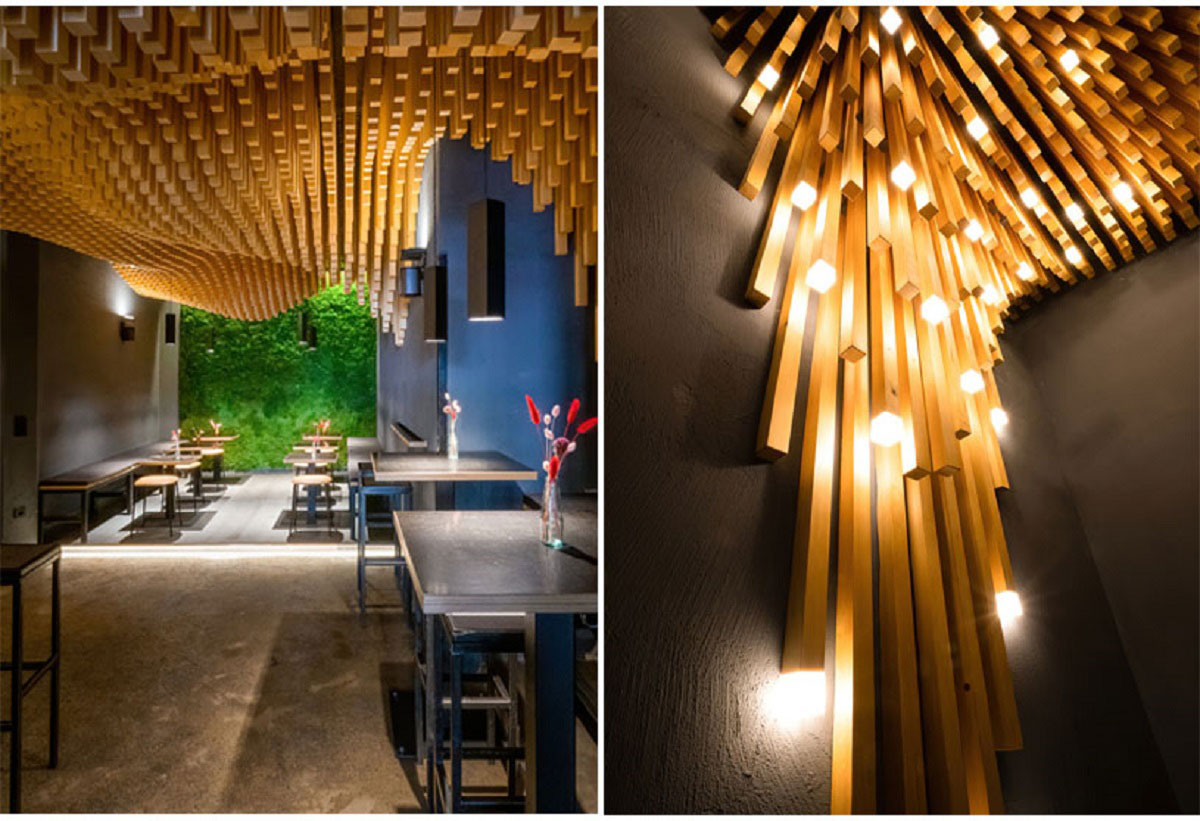
Lights accent the ends of specific rods to reinforce each space’s public or intimate character and to unify the lighting concept within this ceiling surface. The high number of wooden rods and their spacing also reduce sound reverberation in the busy bar.
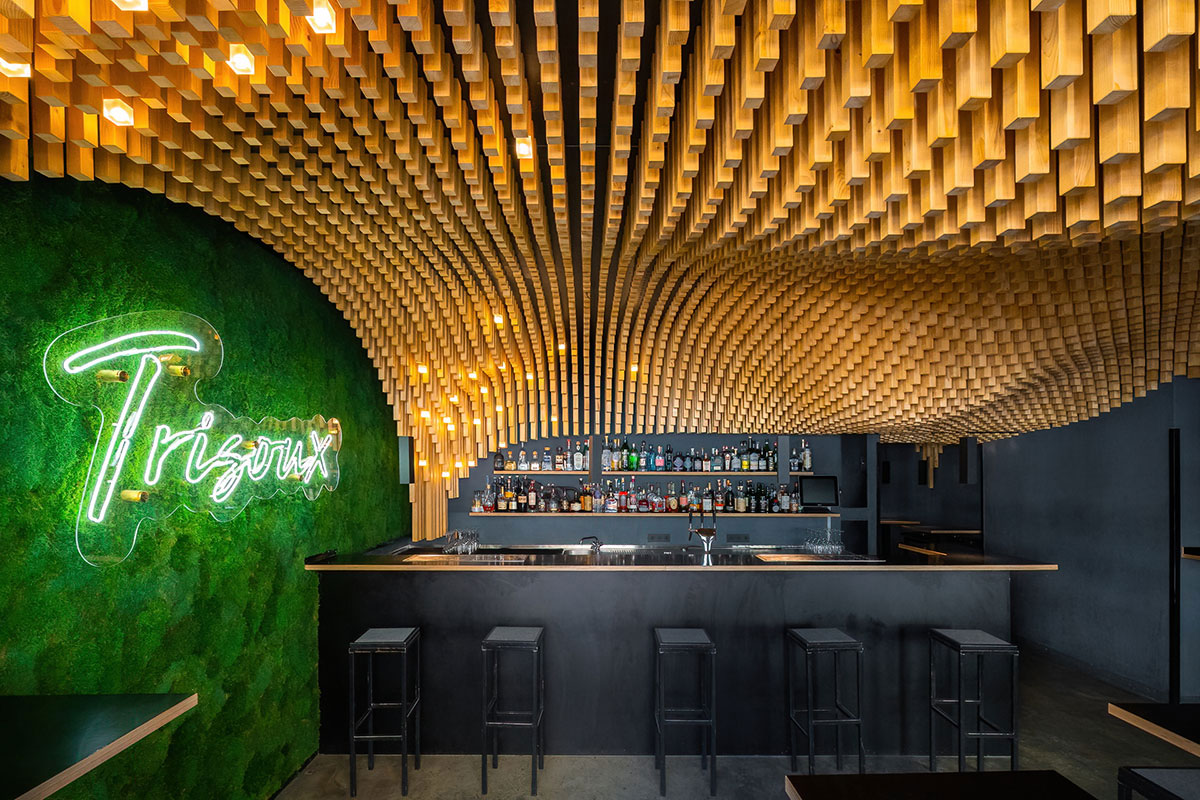
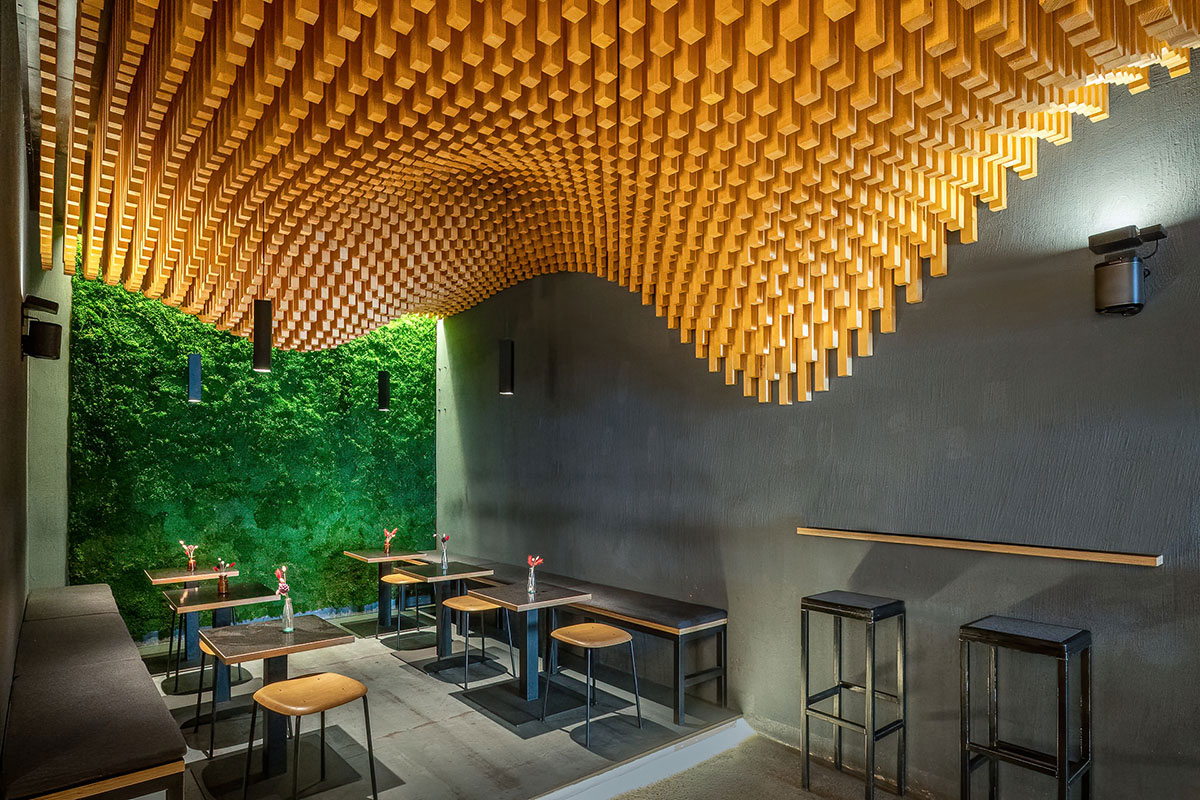
In addition to the wooden ceiling surface, vertical planting elements in the three main rooms unify the separated spaces with similar surfaces. The natural plantings contrast the wood ceiling and restrained materials of floor and ceiling finishes and furnishings.
